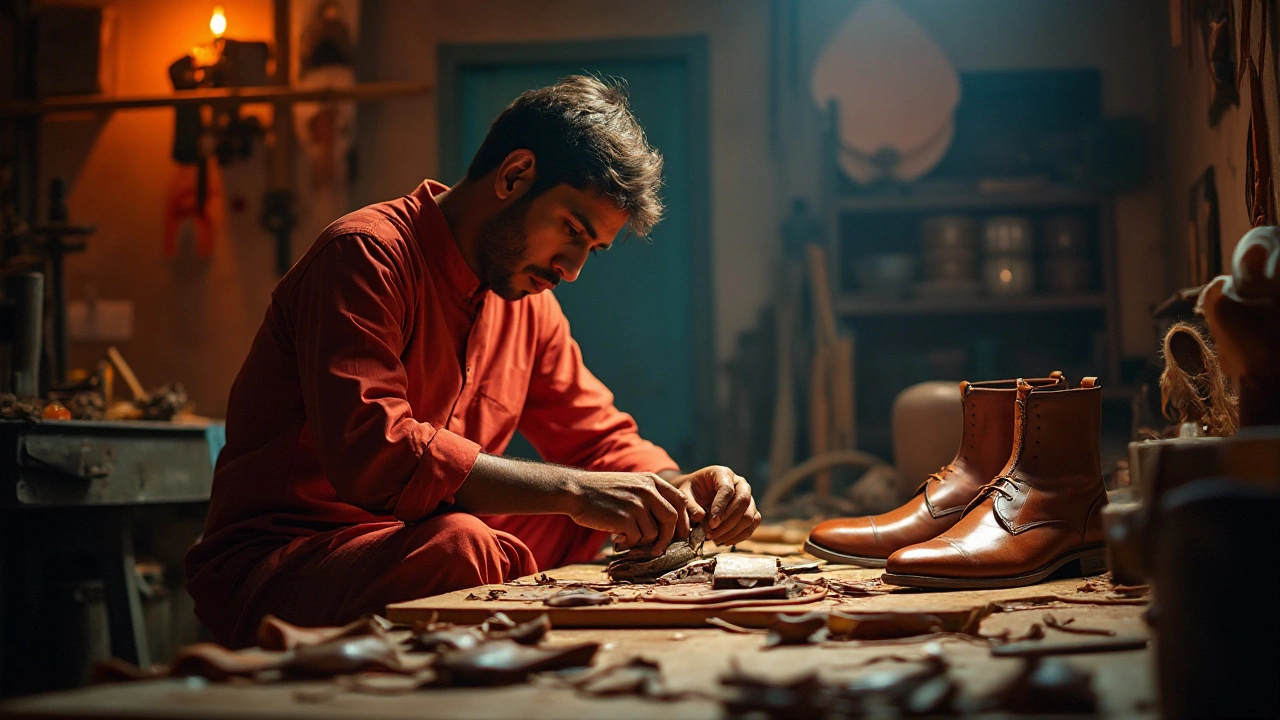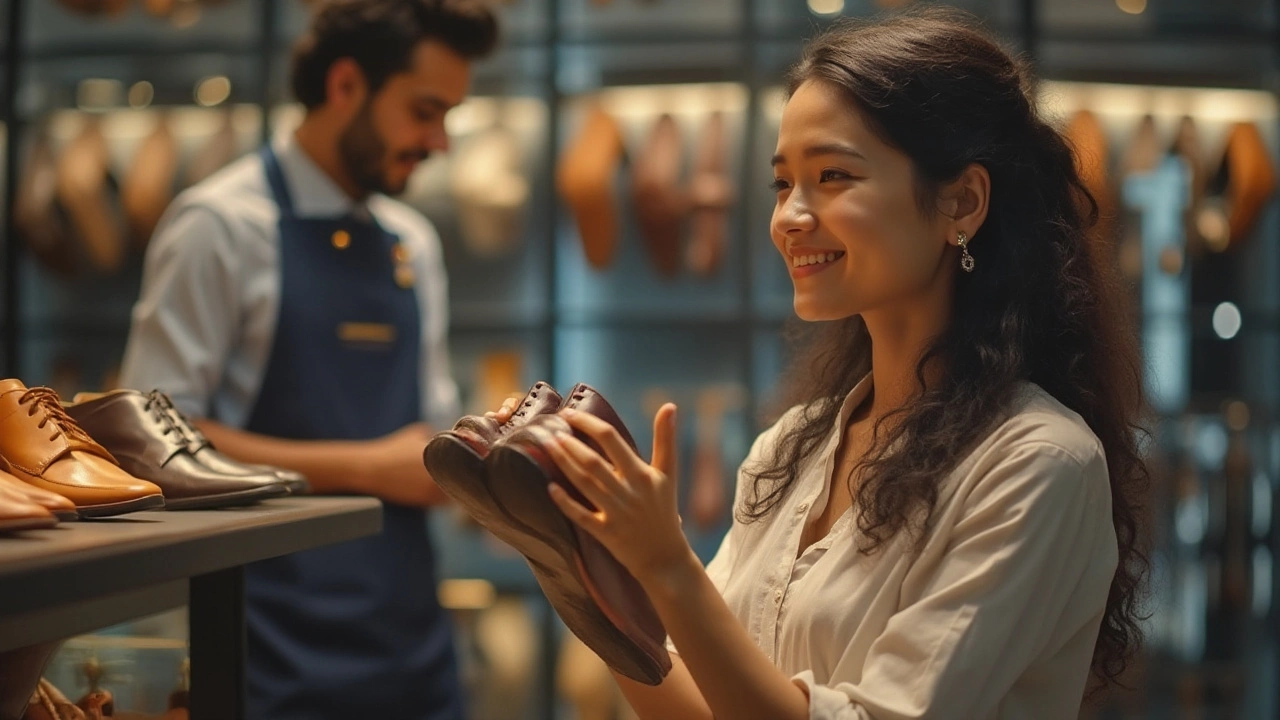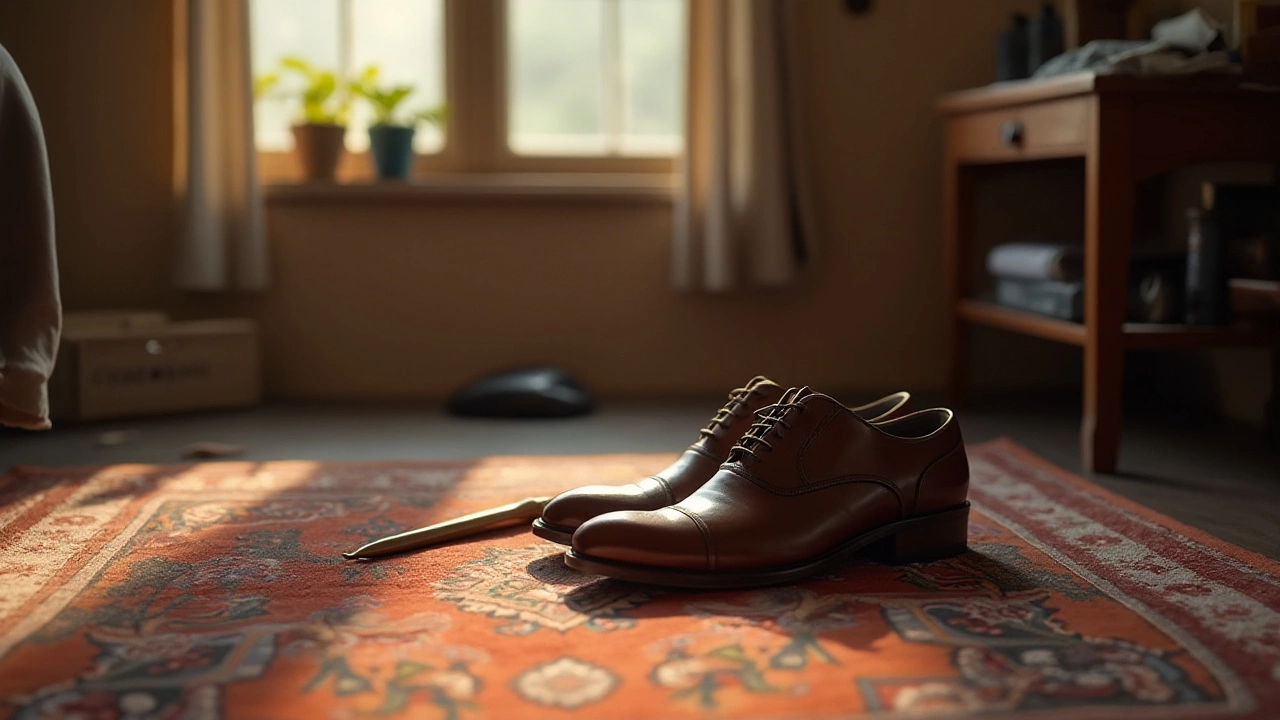The Many Reasons Leather Shoes Can Feel Uncomfortable

Leather shoes often present a paradox; they are cherished for their timeless elegance and durability, yet they can sometimes leave feet aching. Understanding why they feel uncomfortable is crucial for anyone looking to enjoy them without the associated pain.
These shoes, often more rigid than their fabric counterparts, can require a certain level of patience and technique to break in. Their structure, material properties, and fit play a significant role in the experience they provide.
In this article, we’ll explore the reasons why leather shoes can feel uncomfortable and share practical tips on how to choose and care for them to enhance comfort. Whether you’re a leather novice or a seasoned enthusiast, there's always more to learn about how to harmonize style with comfort.
- Understanding Leather Material
- Common Fit Issues
- Breaking In Leather Shoes
- Maintaining Comfort Over Time
- Tips for Buying Comfortable Leather Shoes
Understanding Leather Material
Leather has been a staple in footwear for centuries, admired for its durability, timeless appeal, and unique texture. However, the rigidity that makes leather ideal for longevity also contributes to its reputation for being uncomfortable at first. Leather is essentially animal hide that undergoes a tanning process to enhance its properties. This treatment transforms it into a material that is both sturdy and flexible, though achieving the right balance between these two characteristics can be a delicate art form.
First, it’s essential to recognize that not all leather is made equal. Different types of leather have distinct qualities based on their source and the tanning process used. Full-grain leather, for instance, retains the complete, natural grain of the hide, which gives it superior strength and breathability. Conversely, top-grain leather, which is more widely used in fashion, has its surface sanded and buffed to remove imperfections, offering a more uniform appearance but at the expense of some softness. The nuances in these types influence how the leather shoes will feel against the skin.
A notable challenge with leather lies in its initial rigidity. This is part of its natural resilience but can make new shoes particularly unforgiving before being broken in. A helpful tip is to wear them for short periods at first, allowing the material to gradually mold to the unique shape of your foot. This gradual process is vital since leather adapts to heat and moisture, confirming why patience is often required before they achieve a glove-like fit.
"Good leather shoes are an investment. They require care and understanding to bring out their best. Remember, patience and maintenance can turn discomfort into luxury," advised renowned footwear designer John Harmon.
Beyond initial discomfort, the very nature of leather contributes to its distinct feel. Being a porous material, leather allows for breathability far superior to synthetic counterparts, although if improperly treated or too heavily finished, it can trap heat and moisture. This emphasizes the significance of knowing how the leather is treated when purchasing shoes. Look for leathers that are not overly processed, as these tend to be softer and more comfortable from the outset.
Color and finishes also play crucial roles—in terms of both fashion and function. Dyed leather offers a wide array of aesthetic possibilities but can sometimes compromise flexibility. Natural finishes, though often more susceptible to fading and staining, maintain a greater degree of the leather’s inherent softness. Thus, understanding these elements can guide you toward selecting a pair of leather shoes that not only suits your style but also promises better comfort.
Common Fit Issues
When it comes to leather shoes, the fit often becomes the epicenter of discomfort, transforming an ensemble from chic to downright awful. A key aspect is the inherent stiffness of the leather, which doesn't naturally conform to the varied shapes of human feet. The toe box might be too snug, leading to pinched toes and possible bunions, while a narrow heel can slip, causing blisters as you walk. It's crucial to consider that the sizing of leather shoes can differ depending on the brand and style, which may lead to confusion and misfits.
Another common issue centers around the arches and the support—or lack thereof—provided by leather footwear. Many leather shoes don't include adequate arch support, leaving wearers with painfully fatigued feet after hours of wear. This lack of support can aggravate conditions like plantar fasciitis. Custom insoles or shoes with built-in support can alleviate some of these issues, but finding the right match can be a daunting task.
"The best-fitting shoes annoy the guy who bought them three sizes too small," an old adage reminds us, emphasizing the importance of finding the right fit.
Size inconsistency across brands and even within the same brand over different collections is another issue that plagues leather shoe buyers. The variability in sizing can inadvertently lead to purchases that might initially seem perfect in a store’s lighting and mold to impossibly uncomfortable experiences on an afternoon walk. Often, this arises from the methods used to tan and shape the leather, which can shrink or expand differently under varied environmental conditions. To add complexity, feet can swell during the day, altering the fit. Shoe stretching tools can aid in this regard, but they only help so much.
Addressing these issues means sometimes looking past aesthetics to ensure practicality and comfort. Many style aficionados advocate shopping for shoes later in the day when feet are naturally a bit more swollen to ensure that the fit accommodates natural changes in size. Being able to return or exchange shoes if the fit isn't exactly right also becomes a crucial policy for retailers hoping to satisfy their customers. Consistent fit remains a holy grail for those hunting for the perfect pair of leather shoes, requiring both patience and a willingness to experiment.
Finally, let's delve into an intriguing insight: according to a recent survey by the National Shoe Retailers Association, nearly 60% of people are walking around in the wrong size shoe. This statistic highlights just how essential it is to pay attention to fitting sessions and possibly even have professional measures taken for the best result.

Breaking In Leather Shoes
When it comes to leather shoes, the breaking-in process can often feel like taming a wild stallion. Initially, these shoes might resist every bend and twist, causing abrasions and frustration. The key to easing leather discomfort lies in understanding that the material needs a period of acclimation. Leather, as an organic product, expands and molds to the foot's contours. This transformation requires time, patience, and a bit of ingenuity.
One traditional method involves wearing the shoes around the house in short intervals. Start with 30-minute sessions and gradually increase the duration as the leather flexibility improves. To protect sensitive skin, try wearing double socks to cushion abrasive edges. Some enthusiasts advocate for gently massaging the shoes with hands or soft cloths to soften the leather slightly. This helps the shoes begin adapting to the shape of one's foot, making them less resistant over time.
Innovative techniques also abound; a commonly shared tactic involves using heat, where a hair dryer on low setting is skillfully applied over tight spots while flexing the shoe gently. Once the shoe cools while worn, it generally holds a more comfortable shape. Some others utilize leather stretch sprays that help to relax fibers temporarily during the breaking-in period. However, exercise caution with these methods to avoid over-stretching or damaging the shoes.
"Leather shoes require not only patience but a relationship with your feet. Once broken in, they never forget," mused renowned shoe craftsman John Lobb during a 2023 seminar on footwear comfort.
In addition to manual techniques, supportive accessories enhance comfort during the breaking-in process. Insoles, especially those with arch support, can alleviate pressure points by providing cushioning and structural support. Heel grips are another handy accessory, minimizing the likelihood of blisters forming at the heel by securing a snug fit. Beyond speeding up the break-in process, these accessories frequently improve the overall experience of wearing legendary but stubbornly unyielding leather footwear.
Eventually, perseverance pays off, and what may initially feel like harsh rigidity will gradually transform into supple, well-fitting shoes. Owners of leather footwear must be willing to invest time and effort into nurturing the material into a second skin. This process isn't mere trial by endurance; it forms an unspoken bond between wearer and shoe, promising comfort and style that lasts for years.
Maintaining Comfort Over Time
Leather shoes, if used thoughtfully and cared for properly, can become quite comfortable companions throughout their lifespan. One of the first things to remember is that the initial discomfort often associated with leather shoes arises due to their natural properties. Leather is a durable material that needs a period of wear and care to mold to the unique shape of your foot. This molding process, although sometimes tedious, is worth it as it results in a fit that far surpasses many others in terms of comfort and personal adaptation.
Regular conditioning is crucial for maintaining comfort. Leather is skin, and like human skin, it can dry out and crack without moisture. Utilizing a good quality leather conditioner helps keep the leather supple, which not only prolongs the life of the shoes but also ensures they remain comfortable. After all, when leather is allowed to become brittle, it becomes far more likely to cause blisters and soreness. Treat the leather shoes much like you would a cherished skin-care routine — regular cleaning, conditioning, and sometimes even polishing can keep them in top condition.
Proper Storage and Usage
Another factor in ensuring leather shoes stay comfortable is proper storage and usage. It's vital to rotate your footwear, giving each pair a chance to breathe and recover after a day of use. Leather absorbs moisture from your skin and the environment, and allowing it to dry between wears can prevent unpleasant odors and mold growth. When stored, leather shoes benefit from cedar shoe trees placed inside. These help maintain the shape of the shoe, preventing them from misshaping and causing discomfort. As a bonus, cedar helps to wick moisture away, enhancing the freshness and longevity of your shoes.
Interestingly, a study by the Leather Industries of America highlighted that shoes maintained with regular care and rotated can last twice as long as those that aren't. Here's a quote reflecting the importance of maintenance from a notable footwear designer, "Proper care doesn’t just preserve the shoe's aesthetics; it keeps them fitting and feeling like they did that first comfortable day. It’s an investment in the comfort you can count on."
Professional Adjustments
Sometimes, despite your best efforts, a pair of leather shoes might still pinch or fail to fit perfectly. This is where professional assistance might become essential. Cobblers today can do much more than repair — they can modify shoe size and fit, alter seams, and even stretch areas that might feel snug. Employing these services can make a world of difference, turning a previously uncomfortable pair into one that's a delight to wear. It's this attention to detail and dedication to comfort that underscores the importance of maintaining one’s leather shoes effectively over time.

Tips for Buying Comfortable Leather Shoes
When it comes to buying leather shoes that promise both style and comfort, the journey starts long before you slip them onto your feet. It's crucial to consider several key factors that ensure you walk away with the perfect pair—literally. First, always pay attention to size and fit. Leather doesn't stretch as much as fabric, so investing time in finding the right fit pays off. Try shoes later in the day when your feet are slightly swollen to gauge how they’ll feel after hours of use. While shopping, make sure to walk around a bit in them. This can help identify any immediate points of discomfort that might not be obvious at first glance.
The next consideration is the type and quality of leather. Different types of leather have distinct characteristics. Full-grain leather is known for its durability and breathability but can be stiff initially. On the other hand, softer leather like calfskin can offer immediate comfort. Looking at the quality of the leather can give you clues about the longevity and comfort of the shoes. Checking for lined interiors is also beneficial, as good-quality lining can enhance the breathability and comfort of your shoes dramatically.
“Choose quality over quantity. A good pair of leather shoes can last decades,” says renowned shoemaker John Lobb.
Another vital tip is to consider the shoe's construction. The method used to create the shoe impacts its comfort greatly. Goodyear-welted shoes, while pricier, provide excellent support and are often more comfortable. They offer a robust structure for those who are on their feet frequently. Equally important is the sole; rubber soles can offer more cushioning and flexibility compared to leather ones, which are traditional but can be slippery and hard. Equipping your shoes with insoles could help add that extra layer of comfort if needed.
Moreover, always check the return policy of the store. This provides peace of mind knowing you can swap your purchase if they don’t live up to comfort expectations once you wear them a bit more. Lastly, consider investing in good leather care products. The right conditioner and polish not only extend the life of the shoe but also improve its softness over time. Regular maintenance can enhance the snugness and appeal of your leather shoes, making them cozy companions for your feet.
- Dec, 19 2024
- Violet Greenfield
- 0
- Permalink
Written by Violet Greenfield
View all posts by: Violet Greenfield